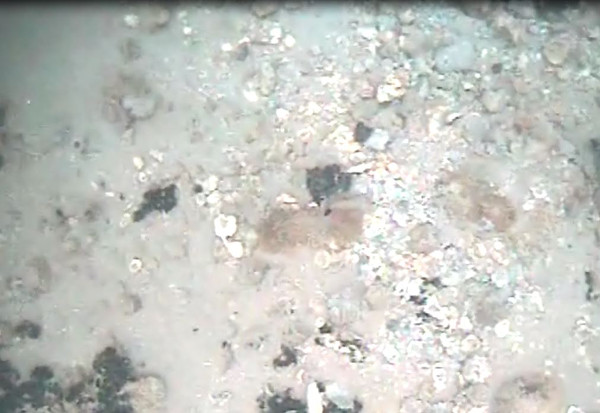|
|
Subtidal high energy over gravelShort descriptionSubtidal high energy gravel ecosystems. Disclaimer: Ecosystem type descriptions are based on biophysical attributes identified in Central Queensland through expert advice and supported by scientific literature. Not all ecosystem types are mapped based on current inventory, and many of the ecosystems described here may also occur in other parts of Queensland.
Classification categoriesSelect from the links below to view related ecosystem type categories Long descriptionSubtidal gravels experiencing very high to moderate energy magnitude including muddy gravels, sandy gravels, and muddy sandy gravel (including cobbles and pebbles). Typically where gravels experience high wave energy in shallower waters, they will be tumbled over each other, becoming abraded through mechanical action. Gravel can be entrained in potholes, where abrasion is particularly pronounced[2]. Gravels can be of various Substrate compositions, such as terrigenous (fragments of decomposed rock) and carbonate (coarse shellgrits and coral rubble). Biota of high current areas in deep water can have a variety of filter feeders attached to the gravel particles (sea pens, sea fans, sponges, bivalves) provided there is minimal particle movement. Typically high energy rubble beds and banks provide refuges for fauna (for example cowrie and cone shells on subtidal cobble beds in the lees of headlands or under coral rubble on high energy reef crests). Special valuesCarbonate gravels composed of shell or coral rubble are habitats for a variety of invertebrates (e.g. gastropod molluscs including cowries, cones and volutes, or burrowing bivalve molluscs). Octocorallians or algae may attach to gravel fragments. These ecosystems may grade into reefal gardens (see type 98) or other biota e.g. sponge gardens (see type 62) and are likely to have values similar to these ecosystems. Spanner crabs may be a significant fishery in rough grounds[1]. Diagnostic attributes:Inundation ‘Subtidal’ Energy magnitude (wave) ‘Very high’, ‘High’, ‘Medium’ Sediment texture ‘Gravel’, ‘Gravel (muddy)’, ‘Gravel (sandy)’, ‘Gravel (muddy sandy)’ QualifiersNone. DistributionK'gari (Fraser Island) and Breaksea Spit is the threshold of high wave energy in Queensland and generally north of K'gari and within the Great Barrier Reef lagoon wave energy is lower. High wave energy gravels predominantly occur south of K'gari but also in areas surrounding Agnes Water to Bustard Head. North of K'gari wave energy is lower. The extent of high current areas is unknown. The following relates to distribution of this ecosystem type within the Central Queensland mapping area:
CommentsOnly wave energy is mapped, but Energy magnitude from other sources including currents, riverine are also applicable. Substrate composition may be relevant, as carbonate substrates such as shellgrit and coral rubble may provide substrates for the settlement of different biota. References
Last updated: 19 July 2019 This page should be cited as: Department of Environment, Science and Innovation, Queensland (2019) Subtidal high energy over gravel, WetlandInfo website, accessed 25 June 2024. Available at: https://wetlandinfo.des.qld.gov.au/wetlands/ecology/aquatic-ecosystems-natural/estuarine-marine/descriptions/106/ |

 — Department of Environment, Science and Innovation
— Department of Environment, Science and Innovation


